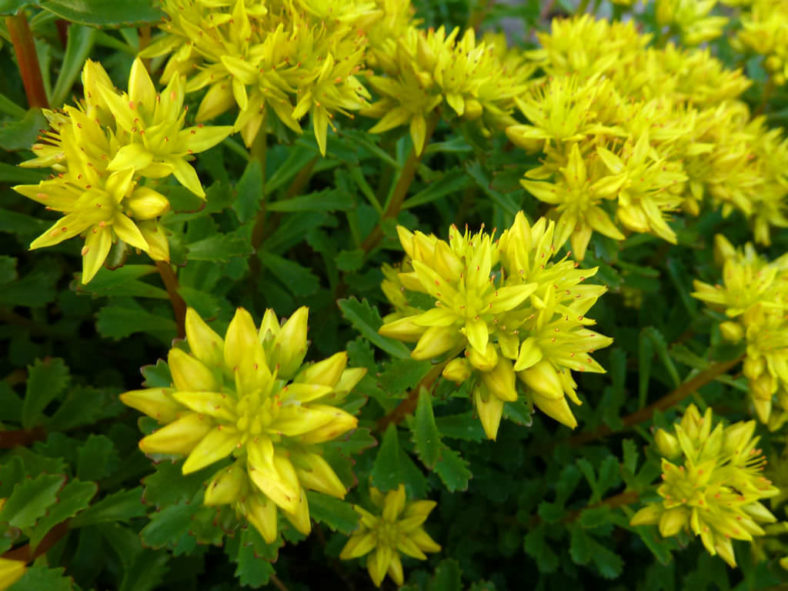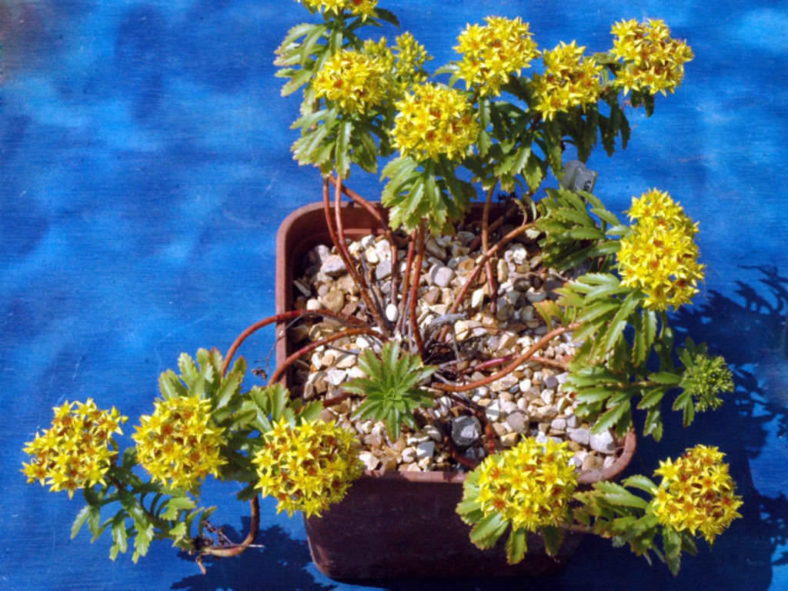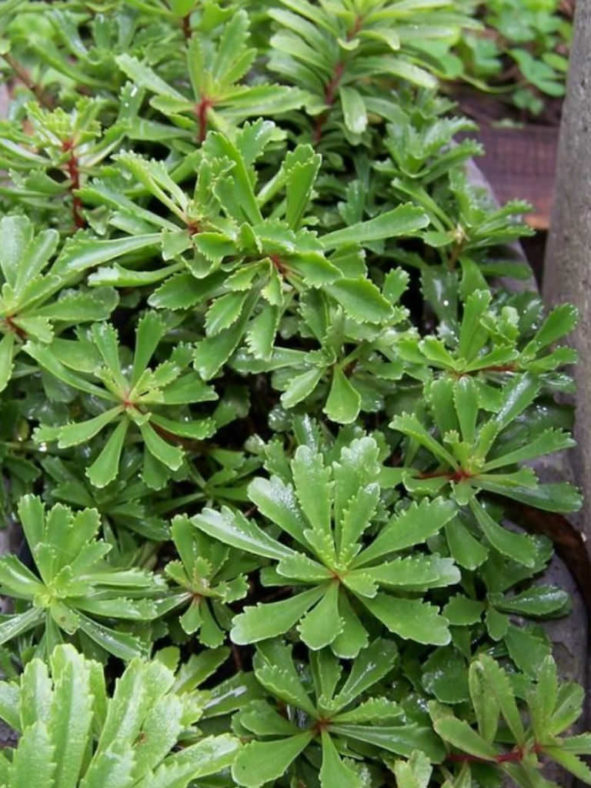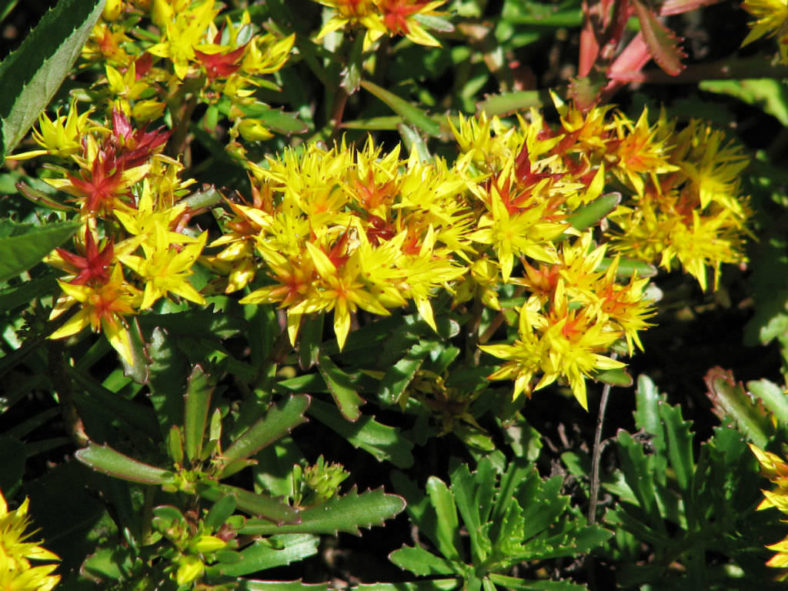Scientific Name
Phedimus middendorffianus (Maxim.) 't Hart
Common Name(s)
Middendorff's Stonecrop
Synonym(s)
Aizopsis middendorfiana, Phedimus middendorffianus subsp. middendorffianus, Phedimus middendorfianus, Sedum aizoon subsp. middendorffianum, Sedum aizoon var. middendorffianum, Sedum kamtschaticum subsp. middendorfianum, Sedum middendorffianum, Sedum middendorfianum
Scientific Classification
Family: Crassulaceae
Subfamily: Sempervivoideae
Tribe: Umbiliceae
Genus: Phedimus
Etymology
The specific epithet "middendorffianus" (pronounced mid-den-dorf-ee-AY-nus) honors Alexander Theodor von Middendorff (1815-1894), a zoologist and explorer of Baltic German and Estonian extraction. Unfortunately, it is often incorrectly spelled "middendorfianus."
Origin
Phedimus middendorffianus is native to China, Japan, Korea, and Russia. It grows in rock crevices and stony soils in forests.
Description
Phedimus middendorffianus, formerly known as Sedum middendorffianum, is a succulent plant that forms a cluster of many erect or suberect stems with thick, fleshy, green leaves. It spreads by creeping branched rhizomes that become woody as they age. The stems branch near the base and can grow up to 1 foot (30 cm) long. The leaves are grooved and have margins serrated in the upper half. They can measure up to 1 inch (2.5 cm) long and 0.2 inches (0.5 cm) wide.
The star-shaped flowers have bright yellow petals, yellow filaments, and orange anthers. They appear in clusters at the end of the stems in summer and can reach a diameter of 0.4 inches (1 cm).

How to Grow and Care for Phedimus middendorffianus
Light: This light-loving plant tolerates partial shade but prefers full sun and grows best in warmer environments. Plant P. middendorfianus in an area of your garden that gets at least 6 hours of sunlight a day.
Soil: This succulent thrives in any well-drained soil. Good drainage is critical for preventing root rot or fungal diseases.
Hardiness: P. middendorfianus tolerates frost and can stay outdoors when temperatures drop below freezing. It can withstand temperatures as low as -30 to 30 °F (-34.4 to -1.1 °C), USDA hardiness zones 4a to 9b.
Watering: The best way to water your P. middendorfianus is to use the "soak and dry" method. Get the soil completely wet, and then wait until the soil is dry before watering again.
Fertilizing: Feed your plant with low-balanced fertilizer to keep it happy and healthy. Use a diluted dose of half the strength recommended on the package.
Repotting: When your plant outgrows its current pot, move it to a larger container that will hold it better. Spring is the best time to repot P. middendorfianus. Make sure the soil is dry before you begin the repotting process.
Propagation: Like all members of the genus Phedimus, this succulent can be grown from seeds, division, or stem cuttings. Dividing your P. middendorfianus is the best propagating method because it is easy and usually very successful. Divide in spring when new shoots are seen. P. middendorfianus is also easily propagated from cuttings. Sow seeds in spring in well-drained soil in a sunny position.
Learn more at How to Grow and Care for Phedimus.
Toxicity of Phedimus middendorffianus
P. middendorfianus can be mildly toxic to humans and animals.
Forms of Phedimus middendorffianus
Links
- Back to genus Phedimus
- Succupedia: Browse succulents by Scientific Name, Common Name, Genus, Family, USDA Hardiness Zone, Origin, or cacti by Genus
Photo Gallery
Click on a photo to see a larger version.


